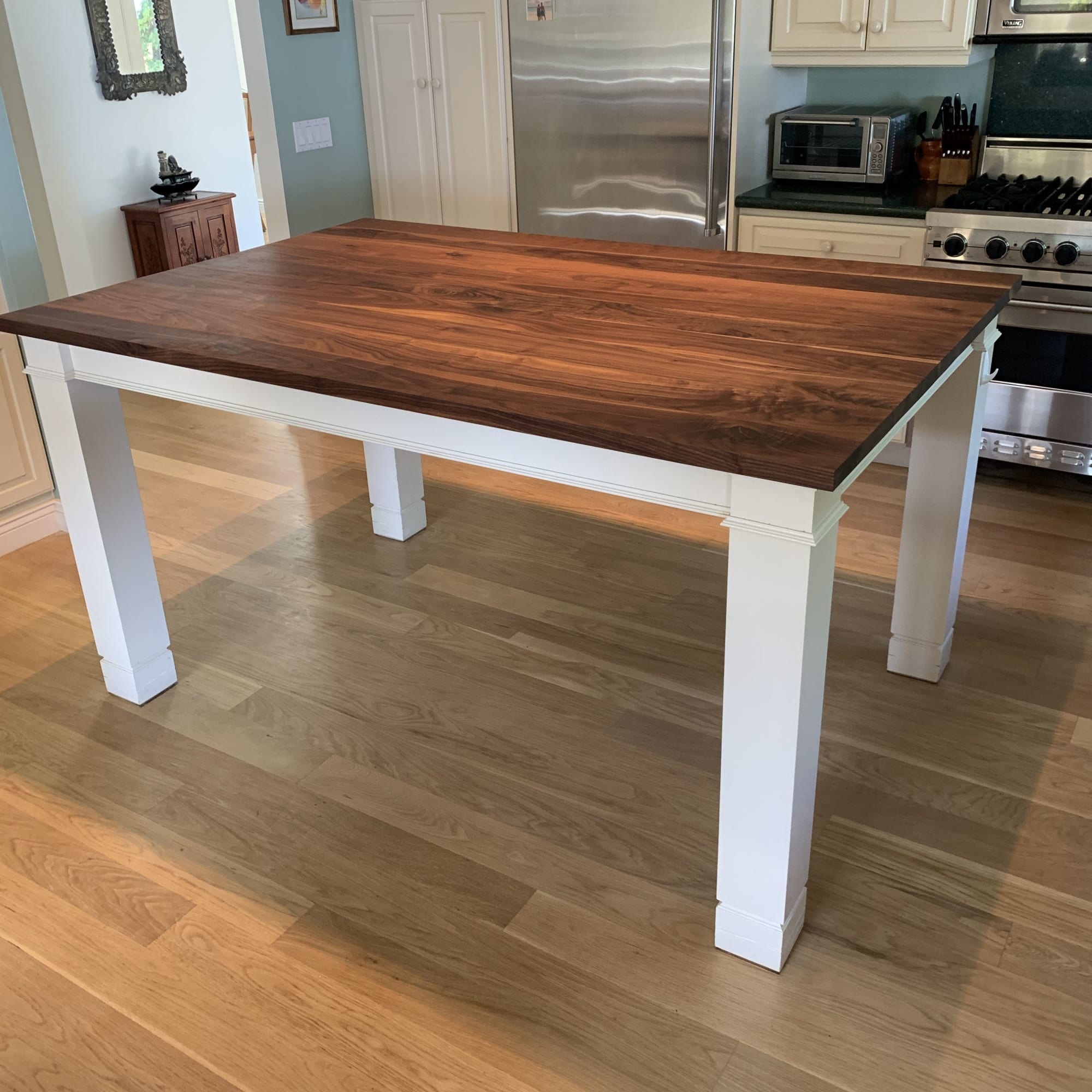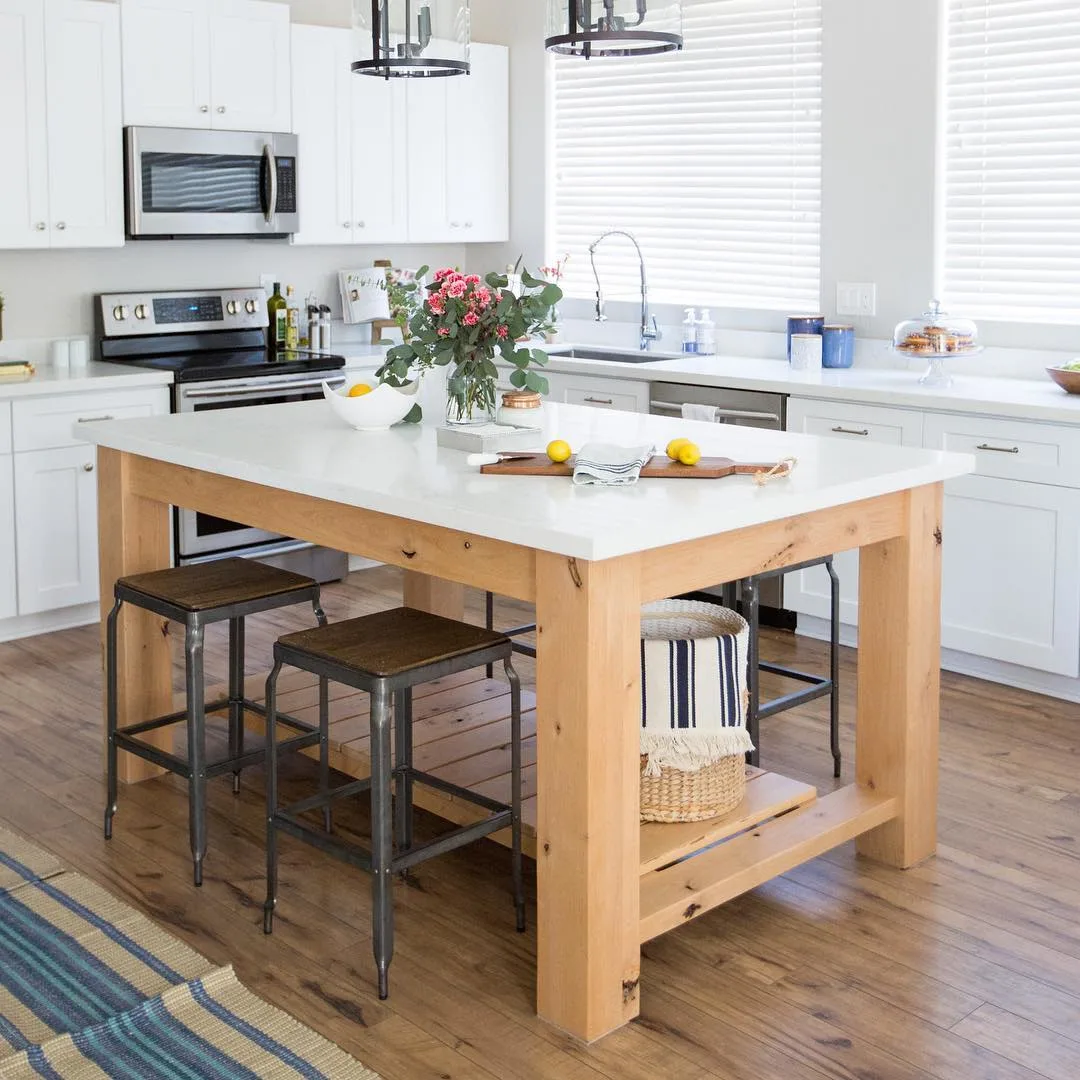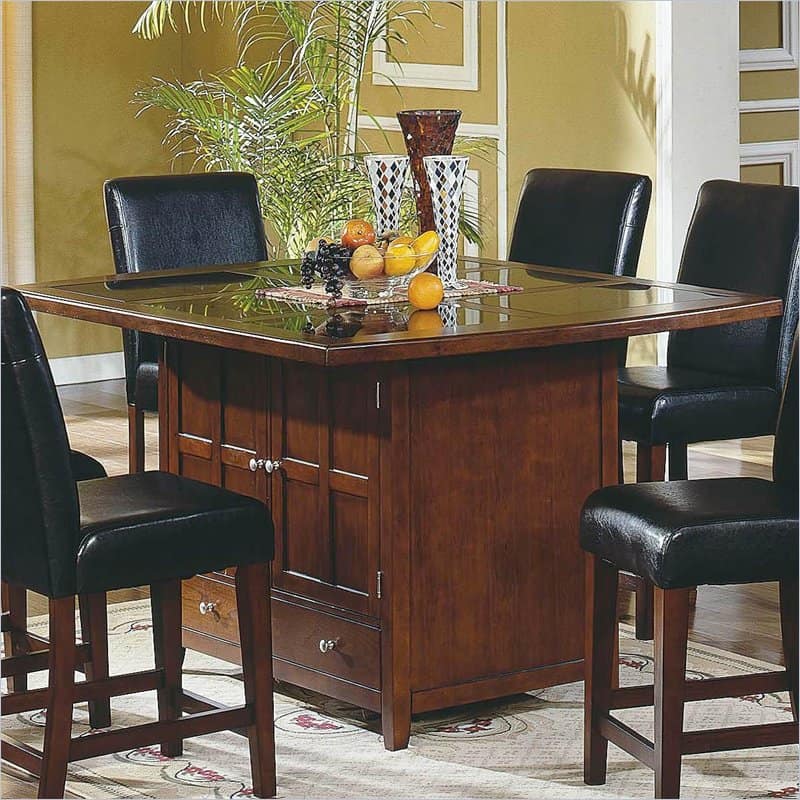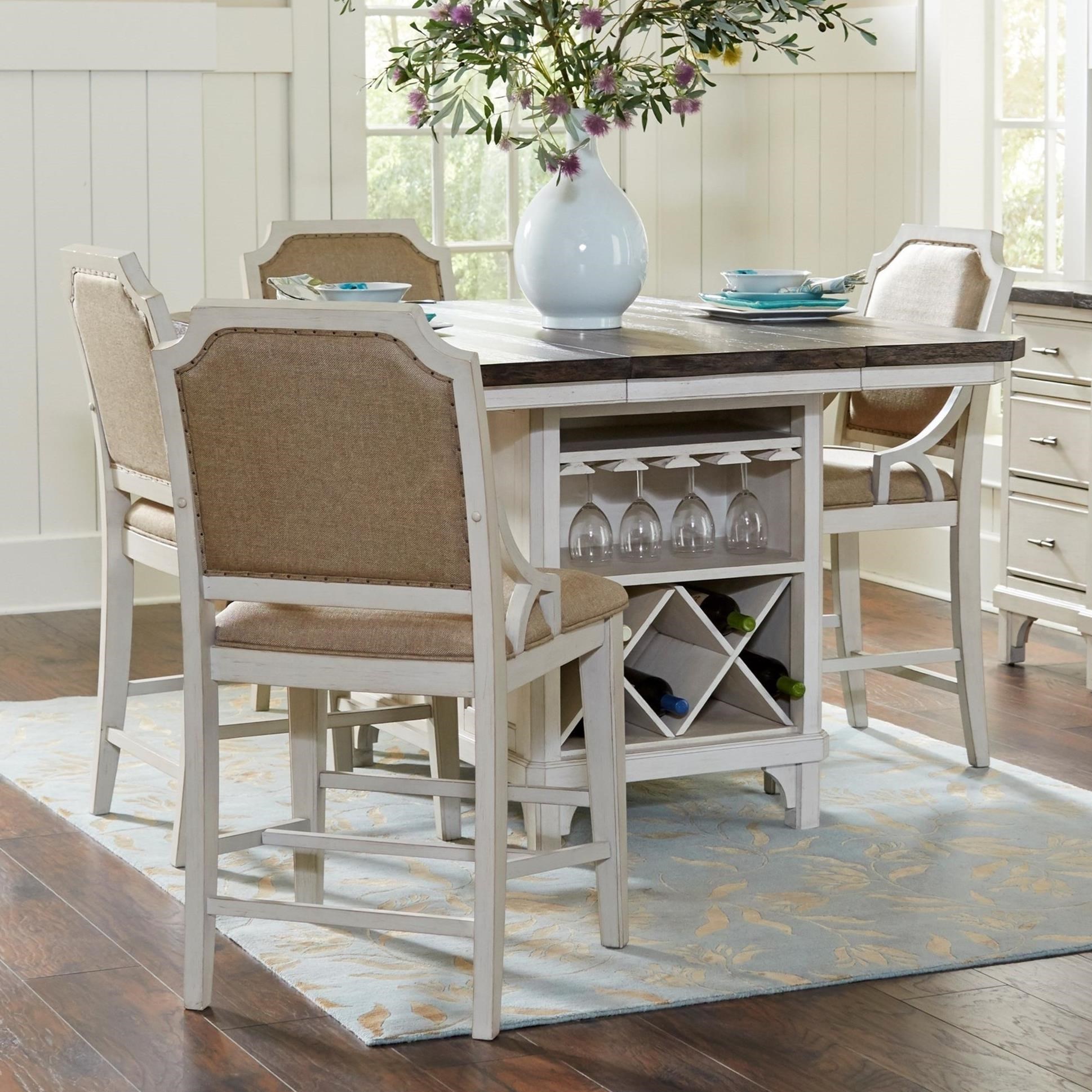The kitchen has evolved from a purely functional space to a central hub for family interaction and entertainment. One of the most defining features of modern kitchens is the island kitchen table. With its unique design and functionality, it serves as a gathering point, workspace, and even a dining area. In this article, we will delve into various aspects of the island kitchen table, including its history, benefits, styles, materials, maintenance, and how to choose the perfect one for your kitchen.
The History of the Kitchen Island
Evolution of Kitchen Design
Historically, kitchens were designed for efficiency and utility. They were often separate, utilitarian spaces that focused solely on cooking. However, as homes became more open in design, the idea of merging the kitchen with dining and living spaces emerged. This architectural evolution paved the way for the kitchen island.
Rise of the Island Kitchen Table
By the mid-20th century, the island kitchen table began to gain popularity. As home sizes increased and family dynamics changed, the open concept began to take shape. The island kitchen table became central to social interactions, serving not just as a place to prepare meals, but also as a family gathering spot. It transformed the kitchen into a multifunctional area, inviting creativity and collaboration.
Benefits of an Island Kitchen Table
Multifunctionality
One of the primary advantages of an island kitchen table is its multifunctionality. It serves as a preparation area, a dining spot, and even a place for children to do homework or for friends to gather over a glass of wine. This versatility adds immense value to the kitchen space.
Additional Storage
Many island kitchen tables are designed with built-in storage, providing extra cabinets, drawers, and shelving. This can help minimize clutter and make the kitchen more organized. From pots and pans to cookbooks, the extra storage can be a game changer in keeping essential items within reach.
Enhanced Social Interaction
An island kitchen table creates a more inviting atmosphere, encouraging family and guests to collaborate in meal preparation or engage in conversation while cooking. The open layout fosters social interaction, making the kitchen a lively, engaging space.
Improved Workflow
The layout of an island kitchen table can significantly improve workflow in the kitchen. Instead of running back and forth between the stove and the counter, an island allows for everything to be within arm’s reach. This efficiency is especially advantageous for those who love to cook or frequently entertain guests.
Styles of Island Kitchen Tables
Contemporary
Contemporary island kitchen tables often feature clean lines, minimalist design, and a blend of materials like wood, glass, or metal. These designs are often functional and stylish, making them perfect for modern homes that favor a sleek aesthetic.
Farmhouse
Farmhouse-style island kitchen tables are often constructed from reclaimed wood and feature a rustic, cozy aesthetic. They evoke feelings of warmth and family gatherings, making them ideal for those who love a traditional look with modern functionality.
Industrial
Industrial-style kitchen islands often showcase raw materials, such as metal and distressed wood. They are characterized by their rugged, unfinished look and are perfect for urban lofts or contemporary homes with a touch of edge. This style combines form and function, appealing to those who value both aesthetics and practicality.
Traditional
Traditional island kitchen tables tend to be ornate, featuring intricate designs and classic materials like oak or cherry. They often have a timeless quality that complements more classical décor, creating an inviting and elegant kitchen space.
Materials Used in Island Kitchen Tables
Wood
Wood is one of the most popular materials for island kitchen tables due to its warmth and versatility. Various types of wood can be used, including oak, maple, cherry, and walnut. Each type of wood has unique qualities, from strength and durability to grain patterns that add character.
Stone
Stone countertops, such as granite or quartz, are often used on kitchen islands for their durability and elegance. They are resistant to stains and scratches, making them excellent work surfaces for meal preparation. Stone also provides a luxurious feel and pairs beautifully with various cabinetry styles.
Metal
Metal is increasingly used in modern kitchen island designs. Stainless steel is commonly used not just for aesthetics but also for its functionality. It’s easy to clean and maintain, making it ideal for high-use areas. Furthermore, metal accents can provide a striking contrast to wooden elements in the kitchen.
Glass
In contemporary kitchens, glass is often used for tabletops or cabinet doors, giving an airy, light feel to the space. While glass can be less durable than other materials, it allows for innovative designs and can create an open feel, especially in smaller kitchens.
Repairing Scratches and Surface Damage
Scratches and surface damage are among the most common issues with island kitchen tables. Fortunately, they are often easy to fix with a few simple steps.
Fixing Light Scratches
For light scratches, consider using a furniture marker that matches the color of your table. These markers are designed to fill in scratches, making them less noticeable. Simply apply the marker over the scratch and wipe away any excess.
Handling Deep Scratches and Gouges
Deeper scratches and gouges require a bit more effort. Begin by sanding the area with fine-grit sandpaper until the scratch is less visible. Then, apply a wood filler that matches your table’s color. Allow it to dry, sand it smooth, and finish with a layer of varnish or paint.
Removing Stains and Burn Marks
To tackle stains and burn marks, a baking soda paste can be effective. Mix baking soda with water to form a paste and gently rub it onto the stain. For stubborn marks, consider using a commercial stain remover specifically designed for your table’s material.
Addressing Structural Weaknesses
Structural issues can hamper the functionality of your island kitchen table. Here’s how to restore its sturdiness.
Stabilizing Loose Legs
Loose legs can make your island kitchen table wobbly and unreliable. Check each leg’s connection to the table and tighten any loose screws or bolts. If the leg is attached with glue, consider regluing it for added stability. Use clamps to hold it in place while the glue dries.
Repairing Cracks and Breaks
For tables with cracks, apply wood glue inside the crack and clamp it securely until the glue sets. If the table has broken parts, you might need to replace these sections with new pieces of wood or metal, depending on the material.
Reinforcing Weak Joints
Weak joints can weaken the entire table. Use wood dowels or metal brackets to reinforce these areas. Making sure all connections are tight will enhance the table’s overall stability.
Restoring the Finish
Restoring the finish on your island kitchen table not only improves its appearance but also protects the surface from future damage.
Sanding and Refinishing
If the table’s finish is severely damaged, consider sanding down the surface and applying a new finish. Use progressively finer sandpaper for a smooth finish, then apply a fresh coat of varnish or paint. This not only rejuvenates the table’s appearance but also adds a layer of protection.
Polishing and Sealing
For minor surface improvements, apply a polish to restore shine. Use a sealer or wax to provide additional protection against moisture and scratches, prolonging the life of your island kitchen table.
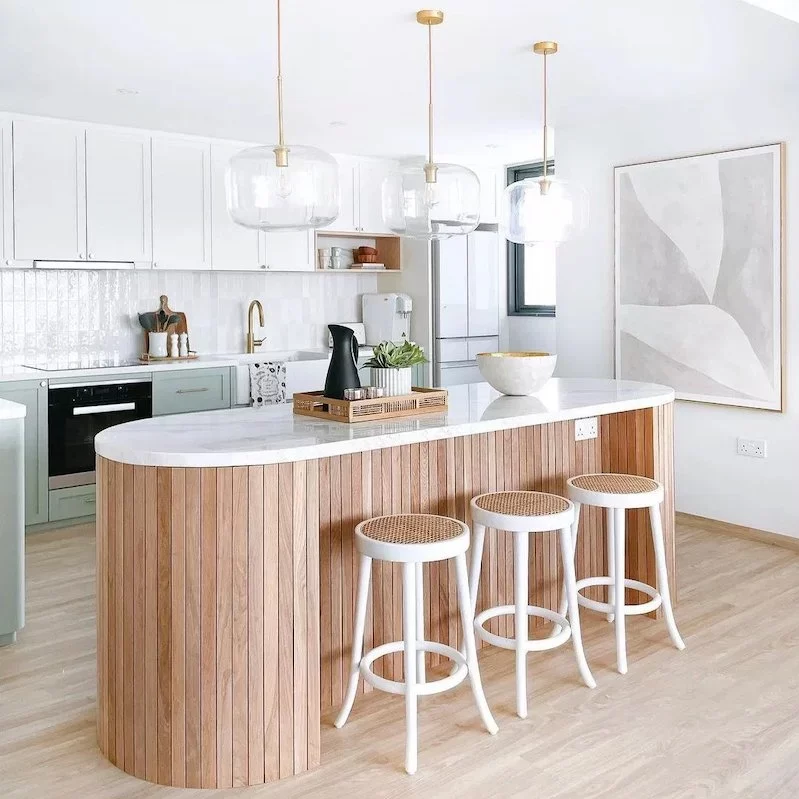 Choosing the Right Island Kitchen Table
Choosing the Right Island Kitchen Table
Assessing Space
Before purchasing an island kitchen table, assess your kitchen’s layout and available space. Measure the area where the table will go to ensure a proper fit. Remember to account for traffic flow, allowing enough space for people to walk around the table comfortably.
Determining Functionality
Consider how you’ll primarily use the island kitchen table. Will it be mostly for meal prep, dining, or gathering with friends? Understanding its primary function will guide your choice in size, shape, and features.
Selecting the Right Style
Choose a design that complements your existing kitchen decor. Whether you prefer contemporary, farmhouse, industrial, or traditional styles, the table should harmonize with the overall aesthetic of your kitchen.
Material Considerations
Select materials based on your lifestyle. If you have kids or host frequent gatherings, a more durable surface might be preferable. On the other hand, if aesthetics are your primary concern, you might opt for something more visually appealing but less robust.
Budgeting
Island kitchen tables come in various price ranges. Determine your budget early in the process to narrow down your choices without sacrificing quality. Remember, investing in a durable, high-quality table can save you money in the long run.
Conclusion
An island kitchen table is more than just furniture; it’s a functional centerpiece for your home. It enhances the kitchen’s usability, promotes social interaction, and serves various purposes that go beyond mere cooking. By understanding its history, benefits, styles, materials, maintenance, and how to choose the right one, you can make an informed decision that adds value and beauty to your living space. Whether you opt for a contemporary design, a rustic farmhouse style, or something sleek and modern, the island kitchen table will undoubtedly become a cherished part of your home for years to come.

